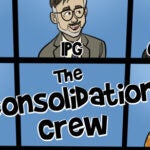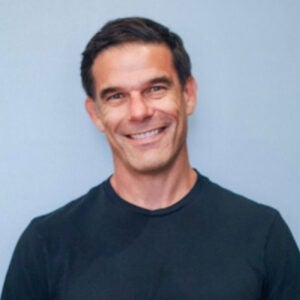 “The Sell Sider” is a column written for the sell side of the digital media community.
“The Sell Sider” is a column written for the sell side of the digital media community.
Today’s column is written by Andrew Casale, president and CEO at Index Exchange.
The economics of publishing have pushed media companies toward sensationalism to drive traffic and scale. Journalists are increasingly incentivized to produce stories that drive clicks at the expense of quality content.
But is this really an optimal path to profit for publishers? Certainly it’s a means to an end, but one that often leaves a less than stellar impression on the consumer of said content.
I believe programmatic and audience targeting are on the cusp of turning the tables on clickbait’s tonnage play, so that quality storytelling and content may again become the key to drawing in more valuable audiences.
Irrelevant Tonnage
Some publishers have found that more salacious headlines can increase traffic by more than 15 times. For the past several years, fairly static cost per mille (CPM) pricing models, such as the rate card less agency discount, have driven the majority of publisher advertising revenues. Therefore it is no wonder clickbait has become so prevalent since the more traffic a publisher can drive, the more ad dollars it can attract. This is a linearly scalable business model where the more scale (impressions) one can attract, the more revenue one will see (impressions x static CPM = revenue).
When a marketer uses programmatic to choose the audience they want to buy, traffic tonnage quickly becomes irrelevant. Therefore, the equation above starts to break down, specifically when CPM is no longer a static figure. Whereas 1 million impressions multiplied by a static $10 CPM equals $1,000 in revenue, today each of those impressions is increasingly valued at a different CPM price.
Marketers buying traffic for traffic’s sake is an antiquated way of thinking. These days, it doesn’t matter how many people click on a story because, increasingly, brands merely want to reach a specific type of customer. And so the business formula where publishers rely on marketers to continue to buy traffic for traffic’s sake will over time become less reliable.
Valuable Audiences
Programmatic can empower publishers to focus on quality instead of quantity, but a concerted focus must be placed on unlocking this new dimension. For instance, if a publisher drives 10 million page impressions to a story based around clickbait, the programmatic bid price on those clicks and the overall value of the content can actually be lower than a higher-quality story that only achieves 5 million page impressions because the latter article attracts a more valuable audience. Today it’s not immediately obvious when this happens, but it could be.
Think of it as “audience currency” measurement. It’s not ubiquitous right now, but savvy publishers have already begun to adjust their thinking in this direction. Rather than judging the success of a story on tonnage alone as reported by Google Analytics’ top-line metrics, if the weight of the programmatic market’s valuation model is also included, the adjusted analytics will tell a very different story.
When accurate measurement of audience value becomes standard practice, programmatic will act as the flashpoint that pushes publishers away from clickbaiting for traffic. Rather than judging success on page views, clicks or impressions alone, publishers that opt to bring bid price information into their analytics suite, either via direct integration or through their DMPs, will start to see an entirely new picture emerge.
It’s no secret that advertising is partially to blame for clickbait. Ironically, it’s also the thing that can help eventually stop it. We must get past the common misperception that clicks equate to audience value. It is just not true. Advertisers can be selective about the audiences they want to reach, which mitigates the need for quantity.
Programmatic advertising is already impacting the buy and sell sides, helping marketers break free of their obsession with scale and giving quality publishers a means to drive revenue and better manage yield. There’s no reason to be stuck in a trap of scale and scale alone. Let’s cut down on all the sensational headlines and content that falls short of expectations, so we can get back to creating value around quality content, ensuring that ads hit their target and impact sales, while consumers see fewer irrelevant offers. Everyone wins.
Follow Index Exchange (@IndexExchange) and AdExchanger (@adexchanger) on Twitter.












